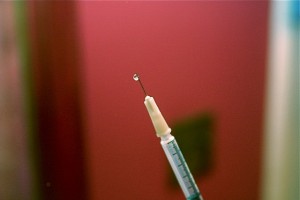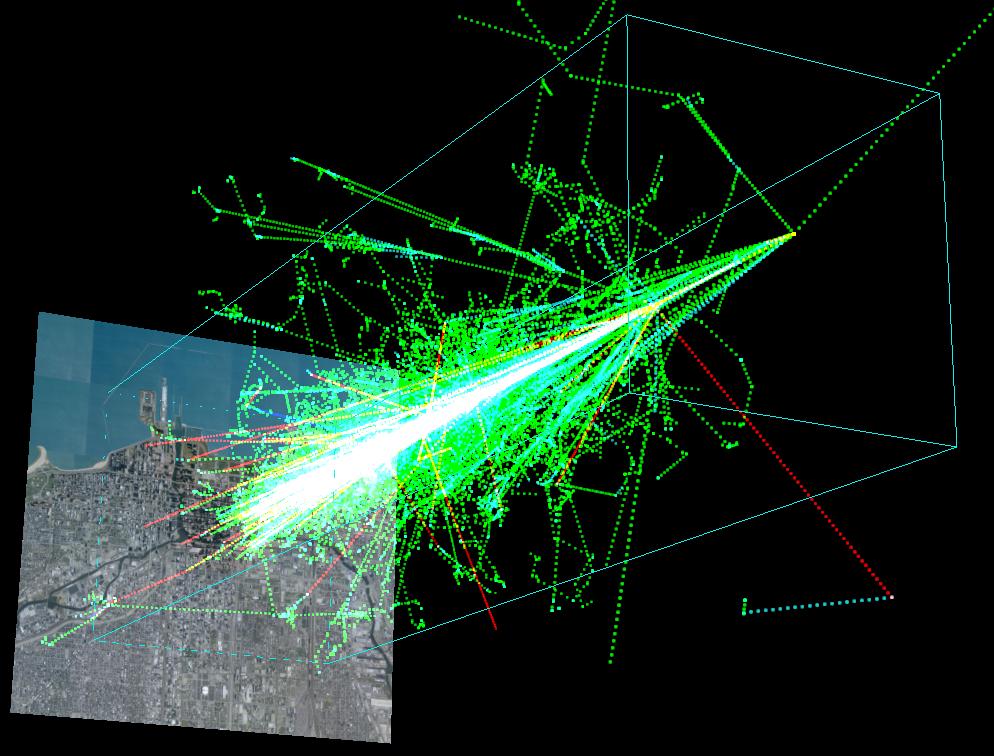 Three pin pricks from a vaccination injection before you become sexually active, or the risk of contracting a cancer that will require drugs, radiation, or surgery to control? What would you choose, for yourself or your child? The FUD over the Human Papilloma Virus (HPV) vaccine has been high, so let’s look at the science and compare that with the B.S. floating around on the web. It’s time for “FUDWatch!”
Three pin pricks from a vaccination injection before you become sexually active, or the risk of contracting a cancer that will require drugs, radiation, or surgery to control? What would you choose, for yourself or your child? The FUD over the Human Papilloma Virus (HPV) vaccine has been high, so let’s look at the science and compare that with the B.S. floating around on the web. It’s time for “FUDWatch!”
Notes
When I originally wrote this, the FUD blog post from southweb.org was unavailable (the site would not respond to web queries). Since then, it became available. I read the blog post, and my comments on it are below. I’ve updated the “FUD” section of this post accordingly since the original posting.
The Science
First, what does the science say about the effects of the HPV vaccines, introduced just a few years ago? Recently, there have been reports on the rate of HPV infection in the wake of vaccination policy to prevent infection by the destructive virus. For instance, as reported by the New York Times [1], a recent peer-reviewed and published study of HPV infection rates in the Journal of Infectious Diseases [2] summarized its findings as follows:
Among females aged 14–19 years, the vaccine-type HPV prevalence (HPV-6, -11, -16, or -18) decreased from 11.5% (95% confidence interval [CI], 9.2–14.4) in 2003–2006 to 5.1% (95% CI, 3.8–6.6) in 2007–2010, a decline of 56% (95% CI, 38–69). Among other age groups, the prevalence did not differ significantly between the 2 time periods (P > .05). The vaccine effectiveness of at least 1 dose was 82% (95% CI, 53–93). [Ref. 2]
Vaccine uptake was not very high in the general female population. Yet, despite that, the rate of vaccine-preventable HPV infection dropped by about half for young women aged 14-19. It was best in young women who received the vaccine panel, while in the population who did not get the vaccine there was some benefit but one greatly reduced over the vaccinated population. Quite simply, the vaccine worked VERY well for those who received it, and did so only in a few years.
In other age groups, the prevalence of the vaccine-preventable HPV infections did not differ significantly before and after the vaccine was introduced, but this is not surprising; the vaccine prevents infection in women who have not yet been exposed, but by age 19 if you haven’t received the vaccine and you have been sexually active (which is a large fraction of teenagers – half of all girls have their first sexual intercourse by age 16, according to the Kaiser Family Foundation [3]).
The FUD
Despite the extremely positive news that has been gleaned from scientific study, there is more FUD (Fear, Uncertainty, and Doubt) floating around the web regarding this vaccine. Part of this is because people confused science-based medical policies (e.g. girls should be vaccinated starting at age 11 or 12, which is a policy based on data about when sexual activity begins to ramp up in males and females) with social or moral policies (“I won’t let my child be vaccinated because she’s a good girl who doesn’t have sex!” and other similar pronouncements).
For instance, an article appeared on the news blog site southweb.org [4] and I’ve seen it make the rounds on Facebook today. The article claims that Dr. Diane Harper, who led scientific tests of two leading vaccines, says that the vaccines don’t work.
First of all, this blog article is terrible. It’s not a news article, it’s just a blog post. But there are good blog posts, and there are bad blog posts. This one is a bad one. It doesn’t source its claims. It doesn’t even quote Dr. Harper on the key point in its headline – it quotes somebody else recalling or interpreting her words (“Joan Robinson” – who may not even be a real person . . . we can’t tell from the sourcing in the post, which is non-existent). In fact, the whole thing appears to be hearsay. At best, it’s eyewitness testimony about somebody else’s words . . . and eyewitness testimony is the weakest form of evidence. So nobody should believe this article. It presents no evidence, only hearsay and anecdote.
Besides, the claimed statements are not what Harper has been more widely quoted as saying. In 2009, she was quoted as saying that we shouldn’t hype the vaccines as a long-term cure for cervical cancers because it’s not yet known how effective the vaccines will be over decades [5]. That’s a scientifically accurate statement; we can’t yet know the long-term effectiveness of the HPV vaccine. However, we know that the tetanus vaccine works for 10 years before requiring a booster; yet most people get that vaccine and don’t complain about it being “ineffective.” Once we have more time, and more data, we learn more how the vaccination policy must change to react to the reality of the long-term effectiveness of the vaccine.
But we know more than Dr. Harper did in 2009. We know that in populations least likely to have already been exposed to HPV, the rate of HPV infection has dropped by half since the introduction of the vaccine. The data even suggests that herd immunity is at work; young women who did not receive the vaccine are at lower risk for contracting HPV merely because the vaccinated population is acting as a firewall against the spread of the virus (much as what happens with whooping cough, measles, mumps, rubella, polio, and other vaccine-preventable diseases). We know that in males, throat cancers can be caused by HPV and that, thanks to the reduction in smoking and thus the reduction in throat cancers caused by smoking, the HPV-induced throat cancers are the most prevalent – and thus preventable by a simple vaccination in males. We also know that medical researcher will be on the lookout for the rate at which HPV changes in different age populations, and in a decade or more may revisit the “3 shots” policy for vaccination based on whether or not the vaccine still prevents HPV after one or more decades.
Dr. Harper is one voice, and one only anticipating data we don’t have yet. The fear-mongerers who simply hate the HPV vaccine because of their moral objection to preventing sexually transmitted diseases will mis-read it, twist it, or amplify it (“cherry-pick” is the logical fallacy that springs to mind) so that their world-view can be preserved despite evidence, data, and reality.
So watch out for FUD over the HPV vaccine. The science say it works fantastically well, and we may be on our way to preventing most forms of cervical and throat cancers that still affect males and females. The science also says that the vaccine has to be administered before exposure to HPV, and that means before males and females become sexually active – so, yes, that means three needles before males and females are 11 or 12 years old. But so what? It’s better than cancer. Having had a relatively benign cancer cut from my face recently, I can honestly say that I’ll take three pin pricks over the removal of a square-centimeter of my face any old day.
References
[2] “Reduction in Human Papillomavirus (HPV) Prevalence Among Young Women Following HPV Vaccine Introduction in the United States, National Health and Nutrition Examination Surveys, 2003–2010.”
Lauri E. Markowitz1, Susan Hariri1, Carol Lin1, Eileen F. Dunne1, Martin Steinau2, Geraldine McQuillan3 and Elizabeth R. Unger2. http://jid.oxfordjournals.org/content/208/3/385.full?sid=2e9a1216-0565-454d-a088-18985d543f6c
[3] http://www.kff.org/youthhivstds/upload/U-S-Teen-Sexual-Activity-Fact-Sheet.pdf
[5] http://www.cbsnews.com/stories/2009/08/19/cbsnews_investigates/main5253431.shtml


